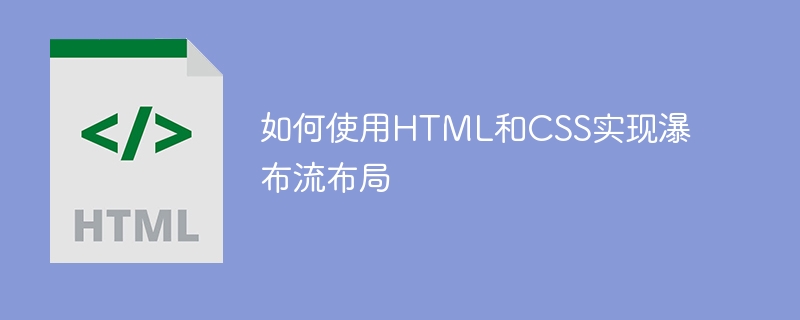

How to use HTML and CSS to implement waterfall flow layout
Waterfall layout (Waterfall Layout) is a common web page layout method, which can make web page content appear With a waterfall-like effect, the height of each column can be different, making the web page look more interesting and dynamic. In this article, we will introduce how to use HTML and CSS to implement waterfall layout, with specific code examples.
First, let’s understand the required HTML structure. To implement a waterfall layout, we need to use a container that contains multiple content blocks, each of which is a waterfall column. Within each column, you can contain one or more specific content elements. Here is a simple HTML structure example:
<div class="waterfall-container">
<div class="column">
<!-- content elements -->
</div>
<div class="column">
<!-- content elements -->
</div>
<div class="column">
<!-- content elements -->
</div>
</div> In the above example, we used a container element named waterfall-container and created multiple ## inside it #column elements, each column element represents a waterfall column. Next, we will use CSS to achieve the style effect of waterfall flow layout.
.waterfall-container {
display: flex;
justify-content: space-between;
}
.column {
flex: 1;
margin-right: 20px;
}
.column:last-child {
margin-right: 0;
}display: flex; attribute to display the container element as a flexible box, and justify-content: space-between;Property to distribute each column evenly in the container. By setting the flex: 1; property, we ensure that the width of each column is adaptive, and we set the spacing between columns through the margin-right: 20px; property. Finally, we use the :last-child pseudo-class selector to remove the right margin from the last column to avoid unnecessary gaps.
<div class="column"> <img src="image1.jpg" alt="Image 1"> <p>Content 1</p> </div> <div class="column"> <img src="image2.jpg" alt="Image 2"> <p>Content 2</p> </div> <div class="column"> <img src="image3.jpg" alt="Image 3"> <p>Content 3</p> </div>
img element and a p element as content in each column. You are free to add more content elements to each column as needed.
const columns = document.querySelectorAll('.column');
columns.forEach(column => {
column.addEventListener('click', () => {
// Add your code for handling the click event here
// For example, you can redirect the user to a detail page
window.location.href = 'detail.html';
});
});querySelectorAll('.column') method to get the elements of all columns, and use forEachMethod iterates through each column. Then, we added a click event listener for each column and performed corresponding operations when the click event was triggered, such as jumping to a details page.
The above is the detailed content of How to implement waterfall flow layout using HTML and CSS. For more information, please follow other related articles on the PHP Chinese website!